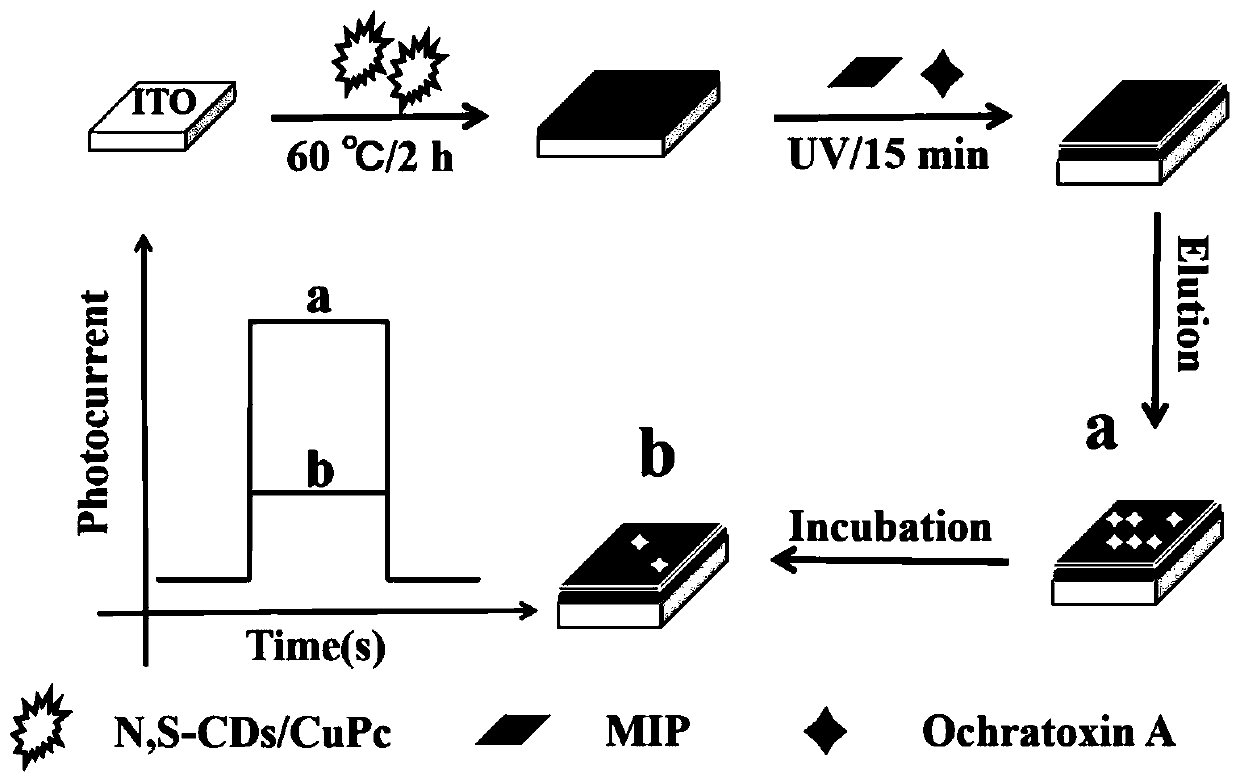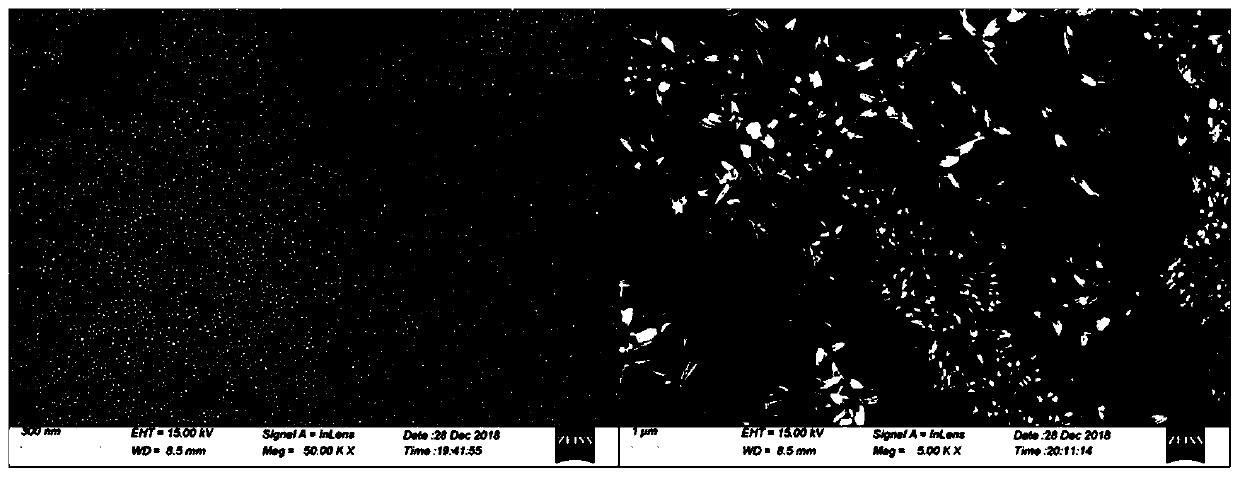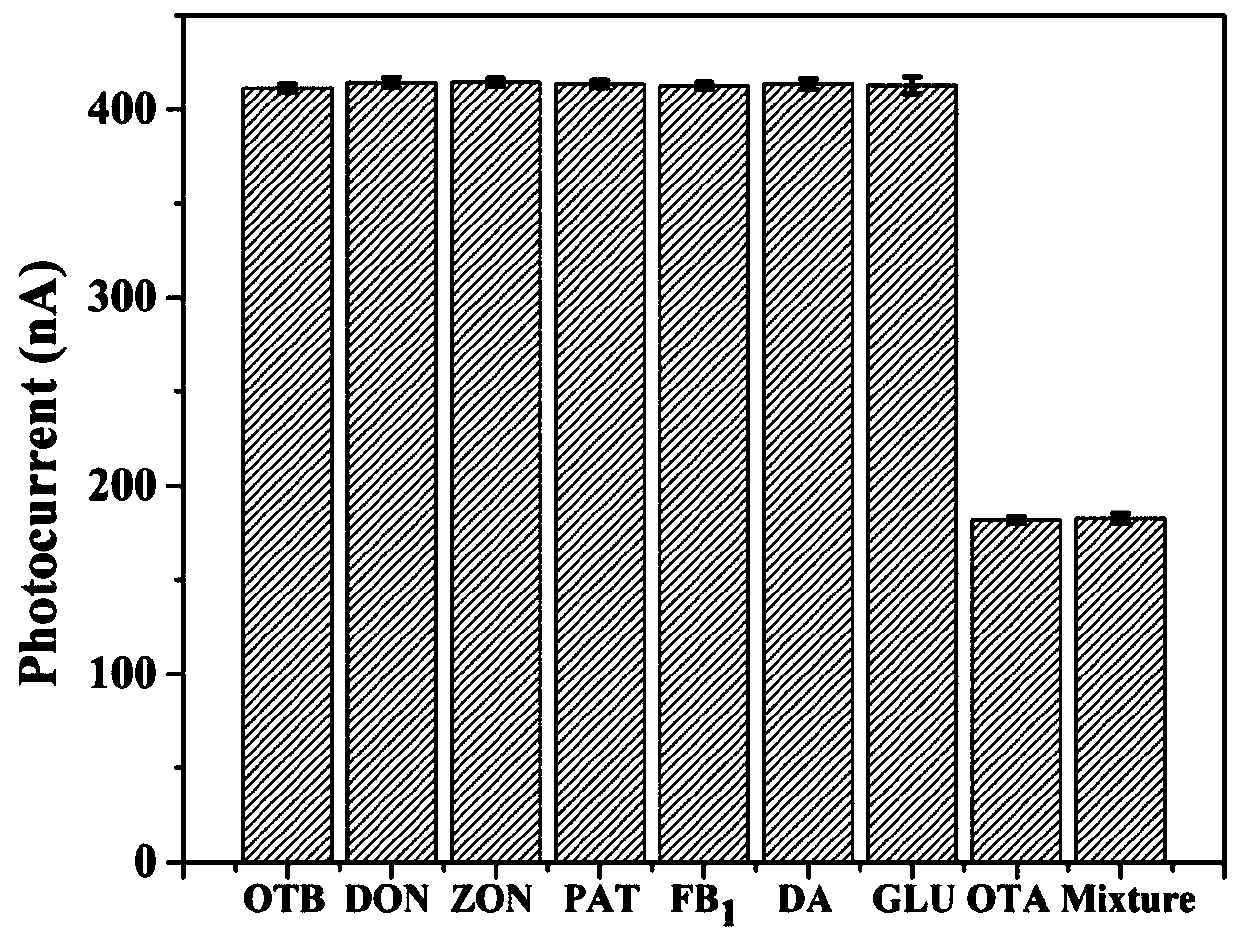Preparation method and application of molecularly imprinted photo-electrochemical sensor based on N,S-CDs/CuPc composite material
A technology of molecular imprinting and composite materials, which is applied in the fields of nanomaterials, sensing, photoelectrochemical analysis and environmental monitoring, can solve the problems of poor selectivity and high detection limit, achieve cheap and portable instruments, improve selectivity, and simple preparation methods easy effect
- Summary
- Abstract
- Description
- Claims
- Application Information
AI Technical Summary
Problems solved by technology
Method used
Image
Examples
Embodiment 1
[0044] A kind of embodiment 1N of this embodiment, the preparation of S-CDs and N, S-CDs / CuPc composite material, preparation process is as follows:
[0045] (1) The carbon dots used in the present invention refer to Wang Hang-Xing et al. in the literature (Rational designof nitrogen and sulfur co-doped carbon dots for efficient photoelectrical conversion applications, Wang Hang-Xing et al, Journal of Materials ChemistryA, 2015, 3,11287) with slight modifications. Specifically, 2 g of citric acid and 1 g of L-cysteine were added to deionized water in sequence, and the resulting mixture was stirred and reacted at 120°C to 130°C for 3 to 4 hours; then the obtained yellow The jelly was transferred to a polytetrafluoroethylene reactor, reacted at 180°C to 200°C for 5 to 8 hours, and then cooled to room temperature. Finally, the N,S-CDs were obtained by centrifugation and ethanol washing, rinsed, dissolved and diluted 30 times for use. Then the pH of the diluted N,S-CDs was adj...
Embodiment 2
[0046] Example 2 Preparation of molecularly imprinted photoelectrochemical sensor, the preparation process is as follows:
[0047] The molecularly imprinted polymer film used in the present invention refers to Mao Lebao et al. in the literature (Molecularly imprinted photoelectrochemical sensor for fumonisin B 1 Based on the method in GO-CdSheterojunction, Mao Lebao et al, Biosens. Bioelectron. 2019, 127, 57-63). First, mix one percent chitosan solution with complex N,S-CDs / CuPc solution, then take 100 μL of the mixed solution and drop-coat it on a clean conductive glass (ITO) electrode, and dry it at 60 °C for 2 to 3 hours and cooled to room temperature to obtain the desired complex-modified electrode. Then, 20 μL of cross-linking agent and initiator azobis, containing the original concentration of 20 mg / ml OTA template molecule, functional monomer methacrylic acid (MAA), ethylene glycol dimethacrylate (EDMA) was added dropwise on the modified electrode. The polymerization ...
Embodiment 3
[0048] Example 3 Molecularly imprinted photoelectrochemical sensor specific detection of OTA, the detection process is as follows:
[0049] Add different substances (Ochratoxin B (OTB), deoxynivalenol (DON), Zearalenone (ZON) and Patulin (PAT), Fumonisin B 1 (FB 1 ), glucose (GLU), Dopamine (DA), OTA, and a mixture containing OTA and all interfering substances were incubated, and the results were as follows image 3 As shown, the concentration of interfering substances is 10ng / mL, OTA concentration is 1ng / mL, it can be seen that the interference has no effect on the signal acquisition of the sensor, but after adding OTA, the current changes significantly, which is consistent with the sensor signal of the mixture culture, and the results show that the sensor has good selectivity for OTA.
PUM
 Login to View More
Login to View More Abstract
Description
Claims
Application Information
 Login to View More
Login to View More - R&D
- Intellectual Property
- Life Sciences
- Materials
- Tech Scout
- Unparalleled Data Quality
- Higher Quality Content
- 60% Fewer Hallucinations
Browse by: Latest US Patents, China's latest patents, Technical Efficacy Thesaurus, Application Domain, Technology Topic, Popular Technical Reports.
© 2025 PatSnap. All rights reserved.Legal|Privacy policy|Modern Slavery Act Transparency Statement|Sitemap|About US| Contact US: help@patsnap.com



